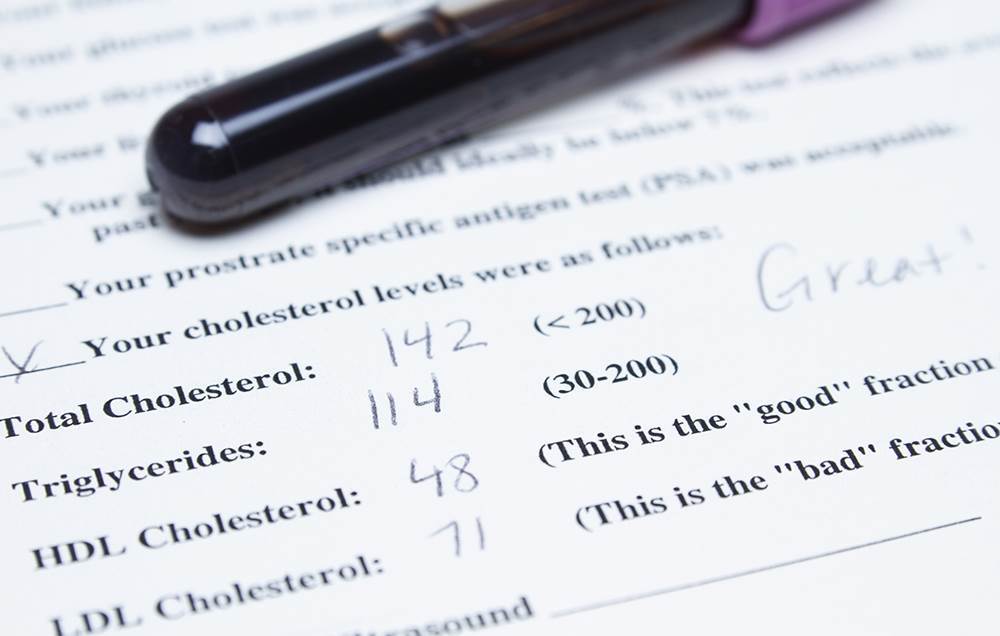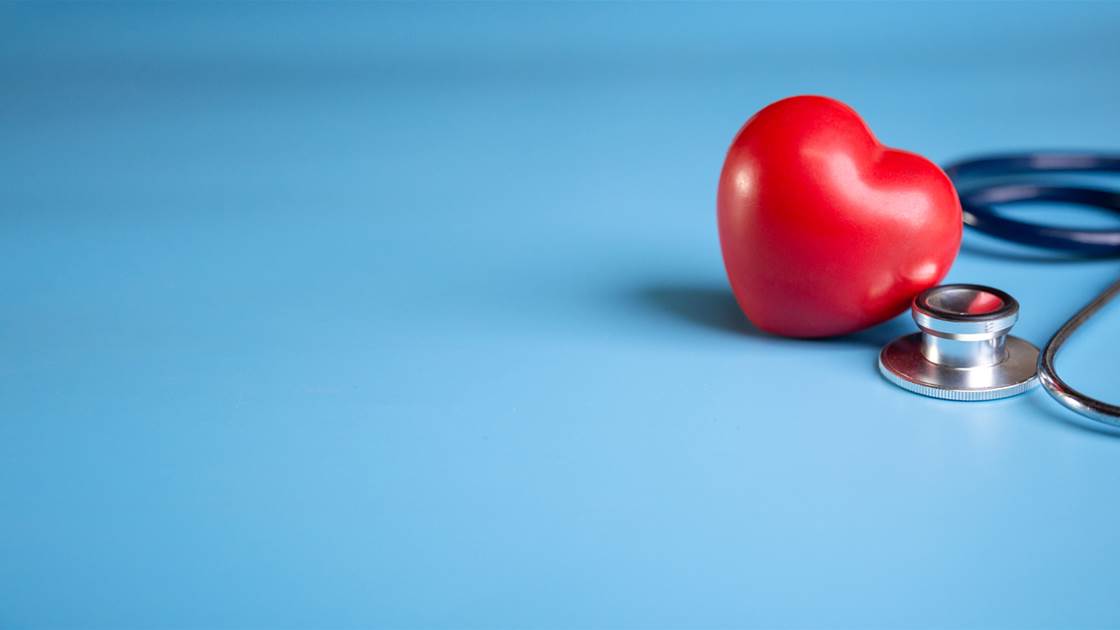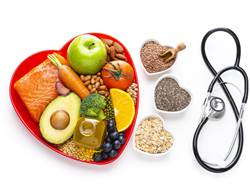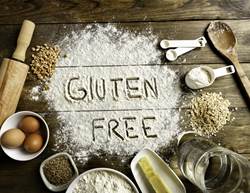Yes, you’ve heard of cholesterol and understand the importance of keeping it in check—but as for the nitty gritty of how to do so, that’s where things may start to get fuzzy.
Don’t worry, you’re not alone: A survey found that most people who have high cholesterol aren’t sure how to manage their condition and don’t feel confident that they can. And 47% of the respondents with a history of or risk factors for heart disease or stroke hadn't gotten their cholesterol checked in over a year.
“With all the conflicting data among the scientific community about cholesterol, it’s hard for patients to know exactly what their cholesterol level should be and what to do to get it there,” says cardiologist Dr Jennifer Haythe.
Since even modestly elevated cholesterol levels can lead to heart disease later in life, here’s everything you need to know (and do) to get a grip on your cholesterol.




Photograph by Getty Images
Cholesterol tends to get a bad rap.
Cholesterol is a waxy, fat-like substance that’s found in every cell of the body, and plays an important role in many bodily functions, such as making hormones, vitamin D and substances that help you digest foods. It travels through your bloodstream in tiny packets called lipoproteins, which are made of fat on the inside and proteins on the outside.
There are two types of lipoproteins that deliver cholesterol throughout your body—low-density (LDL) and high-density (HDL)—and having healthy levels of both is super-important to your overall health.
LDL cholesterol (Bad): Your body uses LDL lipoproteins to build cells—but when you have too much it becomes a “bad” cholesterol, building up in the walls of your arteries and causing them to narrow, says Dr Niket Sonpal.
HDL cholesterol (Good): Known as “good” cholesterol, HDL lipoproteins protect against heart disease by sending “bad” cholesterol to your liver, where it’s processed and removed from your body.
On its own, high blood cholesterol doesn’t cause any symptoms, hence the importance of finding out what your numbers are. The higher the level of LDL cholesterol in your blood, the higher your risk of heart disease. The higher the level of HDL cholesterol, the lower your risk.
Photograph by Getty Images
High cholesterol is only one piece of the puzzle.
“In the past, doctors relied on specific ranges for LDL to determine cardiovascular risk,” says Sonpal. “Today, we consider LDL levels as one factor of many.” Doctors now look at patients in a more holistic manner with regards to cholesterol health, and a person’s individual LDL goal is determined by numerous factors, including:
Family history: If you have a family history of high cholesterol, you may need to get your cholesterol levels checked more often than people who don’t have a family history.
Age and sex: Your risk for high cholesterol increases with age. Levels of LDL cholesterol rise more quickly for women than for men, though until age 55, women tend to have lower LDL levels than men do. (That's because oestrogen, which dips after menopause, keeps LDL cholesterol in check.) And at any age, men tend to have lower HDL levels than women do.
BMI and waist circumference: Your risk increases if your body mass index (BMI) is 30 or higher, you’re a man with a waist circumference of at least 40 inches, or a woman with a waist circumference of at least 35 inches.
Diet: Eating foods that are high in saturated fats (think: red meat and full-fat dairy) will cause an uptick in your total and LDL cholesterol. Trans fats can also do damage by not only raising your LDL cholesterol levels, but decreasing HDL levels too.
Diabetes: High blood sugar contributes to higher LDL and lower HDL cholesterol, and can also damage the lining of your arteries.
Smoking: Puffing on cigarettes damages the walls of your blood vessels, making it easier for fatty deposits to accumulate.
Photograph by Getty Images
There are 7 important numbers to know.
[description]There are seven key numbers that are taken into account—and considered along with the other risk factors you may have—to determine your heart disease risk and what your personal LDL levels should be:
1. Total cholesterol: Total cholesterol is calculated by adding your HDL (“good”) and LDL (“bad”) cholesterol levels and 20% of your triglyceride level (the most common type of fat in the body). Under 4.0 mmol/L is considered normal, 4.0-5.5 mmol/L is borderline, and more than 5.5 mmol/L is high.
2. HDL cholesterol (Good): Because HDL takes cholesterol away from your arteries and back to the liver, you want this number to be higher to help lower your risk of heart disease, says Sonpal. HDL cholesterol levels of 1.0 or higher is the ultimate goal.
3. Triglycerides: Similar to cholesterol, triglyceride levels tend to increase with age or weight gain (or both), and excess triglycerides have been linked to coronary artery disease in some people. Triglyceride levels are considered normal if they’re less than 1.7, borderline high if they’re between 1.7-2, and high between 2-6.
4. Blood pressure: High blood pressure makes your heart and blood vessels work harder and less efficiently, eventually damaging the tissue inside the arteries—and giving LDL cholesterol the opportunity to set up shop along the tiny tears in the artery walls. Help prevent the vandalism by keeping your blood pressure under 120/80.
5. Blood sugar: Insulin resistance (a precursor to type 2 diabetes) is a risk factor that can lead to heart and blood vessel disease. Worse, these conditions can strike even before diabetes is diagnosed. For most adults, a fasting blood sugar level of less than 5.5.
6. Body mass index (BMI): “BMI is a measure of body fat based on height and weight that applies to adult men and women,” says Sonpal. “You can use the currently accepted BMI values to help guide you, but again, it’s just one component of overall health.” A BMI of 18.5-24.9 is considered normal, 25-29.9 overweight, and 30 or more obese, says Haythe.
7. LDL cholesterol (Bad): “To calculate your personal LDL goal, you need to know your risk factors for heart disease,” says Haythe. If you’re high risk because you already have heart disease or diabetes, your LDL goal should be less than 2.0, she says. If you have two or more risk factors, your LDL goal should be less than 3.4, and if you have one or no risk factors, your goal should be less than 4.1. While this LDL goal calculator can give you a general idea of where your levels should be, it’s for informational purposes only—your doctor can hook you up with the most accurate assessment, says Haythe.
The best place to start? Find out what your numbers are by asking your doctor to check your lipid panel. “A full profile includes total cholesterol, HDL, LDL, and triglycerides,” says Haythe.
Photograph by Getty Images
How to take charge of your cholesterol—one lifestyle change at a time
[description]Once you know your numbers and where you need to improve, there are oodles of lifestyle changes you can make to reach your goals:
Improve your diet. “To help improve your cholesterol levels without the help of medications, the first step is to calculate your BMI,” says Haythe. “If you’re overweight, plan a healthy diet to help you achieve your target normal BMI.” Even people who are a normal weight can have high cholesterol, she adds, and a healthier diet can help lower LDL levels no matter your BMI. Haythe recommends adopting a Mediterranean diet—eating meals rich in veggies, fruits, olive oil, nuts and fish, steering clear of fried and processed foods, and cutting out desserts and red meat.
Choose healthier fats. Limit total fat to roughly 25 to 35% of your total kilojoule intake—for a 8,000kJ diet, for example, your total fat intake would be roughly 55 to 65 grams. Saturated fat should clock in at no more than 5 to 6% of your total kilojoules, and nix trans fats entirely. Stick to healthier fats, such as unsaturated fats (olive oil, canola oil, sunflower oil) and omega-3 fatty acids (salmon, walnuts, almonds), which may increase good cholesterol and reduce triglyceride levels.
Increase your fibre intake. “Both soluble and insoluble fibre have heart-health benefits, but soluble fibre also helps lower your LDL levels,” says Sonpal. You can add more soluble fibre to your diet by upping your intake of fruits, veggies, beans, lentils and oats. “This will, in turn, reduce your cholesterol in aggregate with diet and exercise over the long-term,” he adds.
Stop skipping meals. Cholesterol levels may be higher when you eat fewer meals. Skipping meals may also contribute to overeating later in the day, further putting your cholesterol levels at risk.
Exercise more. “To reduce cholesterol, it’s essential to start a cardiovascular fitness routine that involves moderately vigorous exercise four times per week,” says Haythe. (Sweat sessions pull a double duty by helping boost your body’s HDL levels while increasing the size of the particles that make up your LDL cholesterol, making it less harmful). Haythe recommends starting with brisk walking for 15-20 minutes daily, and then increasing as tolerated over the coming weeks to 45 minutes per day.
Drink alcohol wisely. Moderate use of alcohol has been linked with higher levels of HDL (“good”) cholesterol. For healthy adults, that works out to roughly one drink a day for women of all ages and men older than 65, and up to two drinks a day for men 65 and younger. (Too many bevvies, on the other hand, can cause weight gain, and may lead to higher blood pressure and triglyceride levels.)
This is your body on alcohol:
Quit smoking. Butting out may improve your HDL cholesterol level, not to mention lower your blood pressure—and within one year, your risk of heart disease is half that of a smoker. Keep it up for 15 years, and your risk of heart disease may rival that of someone who never smoked.
Consider medication. Depending on your current cholesterol level and lifestyle habits, you may want to consider medication. There are several types available, and combining these with lifestyle changes will keep the dose as low as possible.
Track your progress. Adults 20 and over should have their cholesterol and other risk factors checked every 4-6 years. this will give you and your doctor an opportunity to assess what is going well, and what still needs to be improved.










